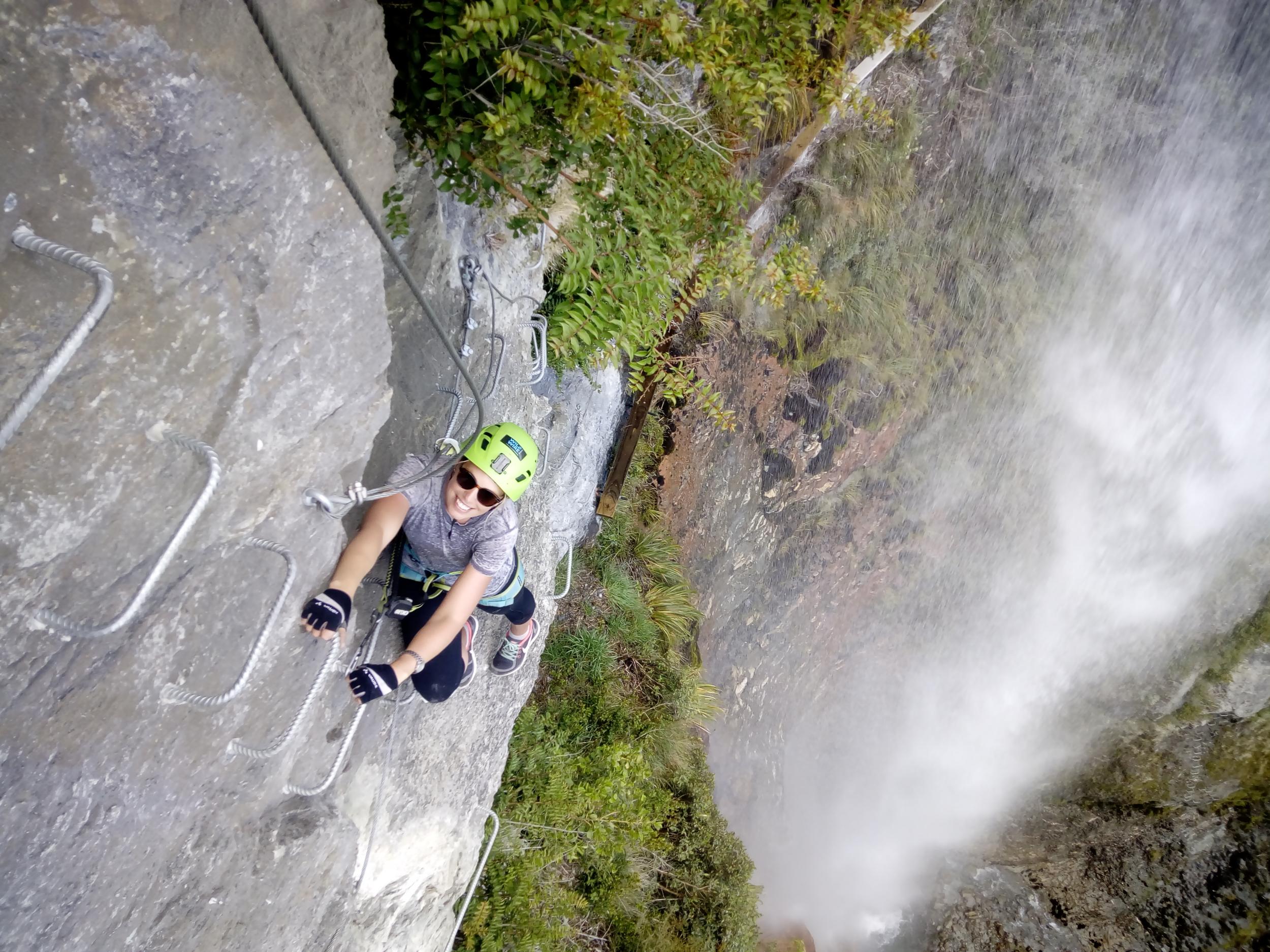Introducing the world's highest waterfall climbing route on New Zealand's South Island
Wanaka's latest thrill-laden attraction is an epic via ferrata course

Dangling by a rope over a rocky overhang near Wanaka, I sneak a peak at the waterfall thundering through the chasm beside me – and instantly regret it. Finding my footing on a metal rung underneath the rock ledge, I propel my body upwards, letting out a triumphant squeal as the carabiner in my outstretched hand connects with the rung above me.
It sounds like expert stuff, but I’m no professional climber. Perhaps a little ambitiously, I’ve signed up to tackle the latest adventure thrill in the lakeside town of Wanaka, an hour’s drive northeast of Queenstown on New Zealand’s South Island.
Winding up alongside the left plume of a twin waterfall with the aid of metal rungs, suspension bridges and 1,000m of cables bolted into the cliff face, the first two sections of Wildwire Wanaka’s via ferrata course – Go Wild and Wild Thing – opened in 2015 and 2016 respectively. Last September, the aptly named final section, Lord of the Rungs, was unveiled. So steep is the descent to the valley, some 450m below the top of the falls, that a helicopter transfer is required to get back down. But while my climbing guides Marika Gargulak and Ric King know their stuff, anyone with a good level of fitness and a head for heights can tackle the full five to seven hour climb.
“We’ve had kids as young as 14 on Lord of the Rungs,” Ric assures me on the 20-minute drive to Twin Falls, which tumble down a steep, verdant hillside near the turn-off to Treble Cone, one of the country’s top ski resorts. My climbing companion is a gentleman celebrating his 80th birthday, but with a lifetime of search and rescue operations under his belt, his agility belies his vintage.
Meaning “iron road”, the via ferrata concept originated in Italy during World War One as a method of moving soldiers and equipment through otherwise impassable terrain. These pathways through the mountains, featuring a series of steps fixed into the cliffs, later become recreational routes. More than 1,000 via ferrata now exist across the Alps and the Dolomites. The concept has since been embraced beyond Europe, reaching Queenstown in 2003. But while the Via Ferrata Queenstown course is wonderfully scenic, the Wildwire Wanaka concept is truly unique.
Creating the climb was the culmination of a long-held dream for Laurel and her husband Mark Morrison, a long-time Wanaka mountain guide who, at the age of 19, was one of the first people to abseil down Twin Falls.
“I remember standing at the top back then thinking that this place is truly amazing,” Mark tells me later. “I never thought that 20 years on, I would be running a business there.”
As we begin our ascent, I’m reluctant to trust the metal rungs, which look like giant staples, but soon relax when I learn each one is tested to hold three tonnes. With our lanyard system clipped continually to the rungs and the cable, it’s all very safe. I soon find my rhythm, and after what feels like no time we arrive at the base of a 60m section of the falls that marks the Lord of the Rungs start point.
From here, it’s a 45-minute walk out via a steep goat track. Instead we enjoy a picnic lunch before pressing on until we reach a suspension bridge that takes us behind the cascade. Cocooned between the cliff face and the plume of water, seemingly suspended in a cloud of mist, it’s impossible not to appreciate the spectacular natural setting.
“We wanted to create something amazing that would really immerse people in the terrain,” says Mark, adding that the company was an early adopter of the New Zealand Tourism Sustainability Commitment, which aims to see all tourism businesses commit to sustainability by 2025.
With two overhangs and a Tyrolean traverse (basically a horizontal zipline in which you clip onto a wire and pull yourself across) to negotiate, Lord of the Rungs is a little more difficult than the first two sections. But despite frequent stops to sit back in our harnesses and enjoy the incredible views across Lake Wanaka to the snow-capped peaks beyond, we reach the summit in less than five hours.
When our heli-taxi arrives to collect us, our pilot Charlie Ewing – who also owns the land the falls are located on – slowly spirals down towards the valley floor so we can get a good look at the feat we’ve just accomplished.
“It’s not a bad office, is it?” Marika grins as we climb back into the Wildwire van.
“Not in the slightest,” I sigh.
Travel Essentials
Getting there
Air New Zealand flies to Queenstown from Heathrow, transiting through Los Angeles and Auckland, from £1,006 return. Wanaka is a one hour drive from Queenstown.
Staying there
Just 60m from the lake, Wanaka Homestead is one of the best B&Bs in town, with doubles from £129.
More information
Wildwire Wanaka’s Lord of the Rungs climb (£256), including a heli-taxi and lunch, runs once daily year-round, departing from Wanaka.
Subscribe to Independent Premium to bookmark this article
Want to bookmark your favourite articles and stories to read or reference later? Start your Independent Premium subscription today.

Join our commenting forum
Join thought-provoking conversations, follow other Independent readers and see their replies